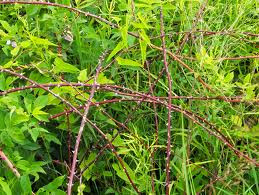 |
| Female Downy Woodpecker enjoying home made suet by Grandma Pearl |
You can find suet or beef fat trimmings at your local butcher shop, usually at a drastically reduced price. Or, you can trim the fat from meat you cook yourself--save the fat scraps in a container and keep refrigerated until you are ready to render them.
Wild bird supply stores carry plain suet cakes that have already been rendered. These can be used without any additions, or you can supplement them with bits of fruit, seeds or nutmeats to please your backyard birds.
If you choose to make your own suet from fat trimmings, here is the process:
1. Cut the fat into small pieces, or use a food processor or meat grinder.
2. In a deep saucepan, melt the fat OVER LOW HEAT. Don't rush this step! It is better to do this slowly than to risk a fire! Treat it with respect as you do any cooking oil or other fat on the stove.
3. Once the fat is completely melted, pour it slowly and carefully into molds or other containers. Remember that the unmolded product will need to fit into your particular suet feeders.
4. Allow to cool and then refrigerate for several hours. Refrigeration causes the fat to solidify so it can be handled more easily.
5. If you decide to add other ingredients to the suet, do that before pouring the suet into containers.
These are some of the ingredients that I like to add:
- small pieces of nuts like peanuts, pecans or walnuts
- black oil sunflower seed
- peanut butter
- cracked corn or corn meal
- oats, wheat or white flour
- raisins, apple or other small fruit pieces, currants
titmice, nuthatches, chickadees, woodpeckers
Grandma Pearl
More Homemade Bird Food:
Peanut Butter Treat
Pine Cone Bird Feeder
Mini Pumpkin Bird Feeder
Surprising Alternative Bird Foods
Best Suet Feeder
Learn More About:
Downy Woodpeckers
Hairy Woodpeckers
Red-Bellied Woodpeckers
Black Capped Chickadees
White-Breasted Nuthatches
Grandma Pearl
More Homemade Bird Food:
Peanut Butter Treat
Pine Cone Bird Feeder
Mini Pumpkin Bird Feeder
Surprising Alternative Bird Foods
Best Suet Feeder
Learn More About:
Downy Woodpeckers
Hairy Woodpeckers
Red-Bellied Woodpeckers
Black Capped Chickadees
White-Breasted Nuthatches























